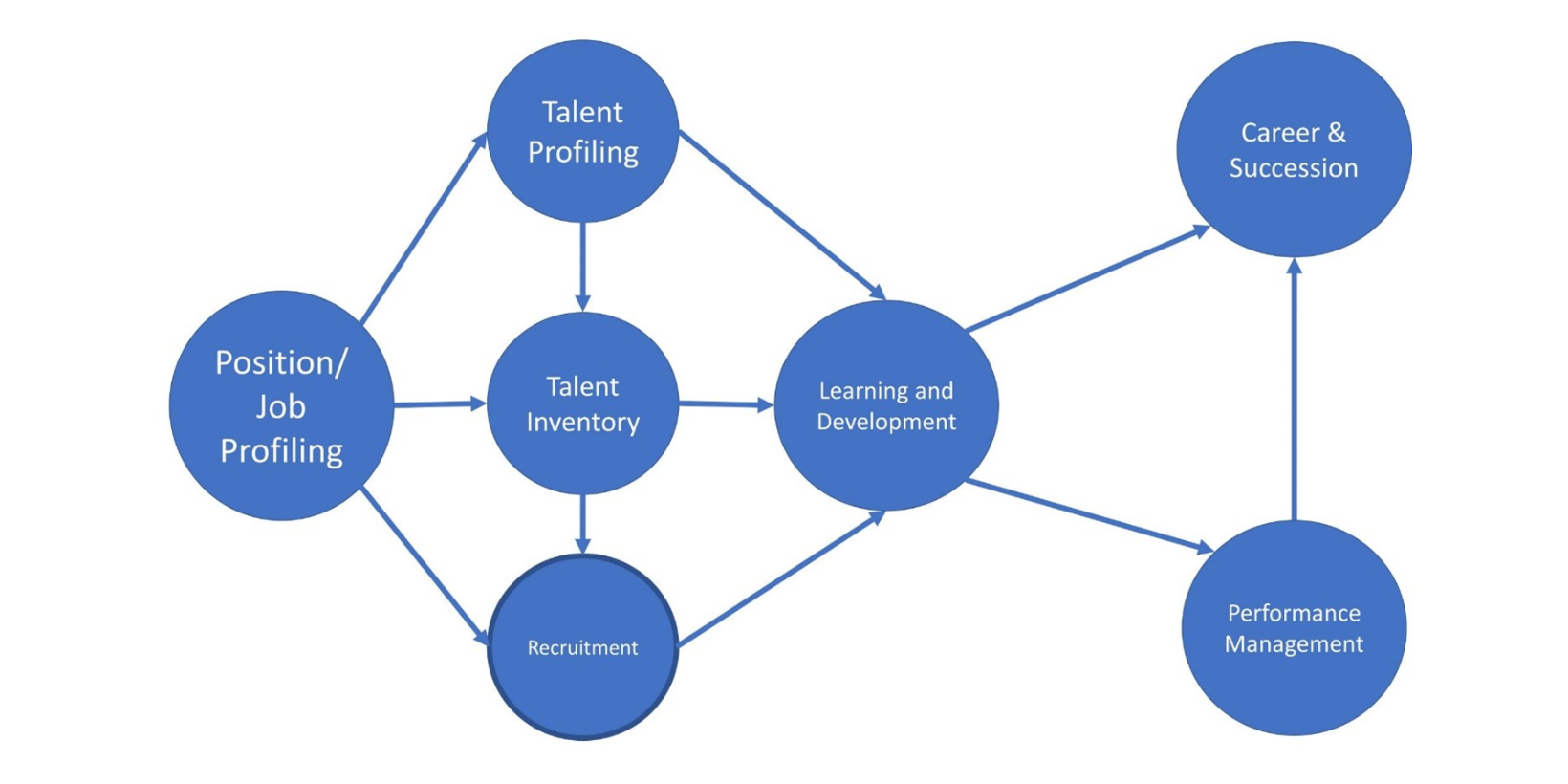The success of an organization hinges on its ability to cultivate a workforce that is not only proficient but also synergistically aligned with its strategic vision. The visual representation that you see underscores the interconnectedness of various talent development components. Let’s delve into how a competency framework serves as the nexus of this integrated talent development system, ensuring seamless alignment and interaction between its various elements.
Position/Job Profiling: The Foundation
Position or job profiling is the cornerstone of the talent development system. By defining the competencies required for each role, it sets the stage for all other talent management processes. It ensures that every subsequent process, from recruitment to succession planning, is anchored in a clear understanding of what each job entails and what success looks like.
Register for our Fundamentals of Competency Development Online Public Workshop!
Talent Inventory and Talent Profiling: The Strategic Reservoir
A talent inventory compiles the current competencies within the organization, while talent profiling assesses the specific strengths and development needs of individual employees. Together, these processes establish a strategic reservoir of data that feeds into targeted development initiatives, ensuring that the organization’s talent pool aligns with its evolving competency requirements.
Recruitment: The Entry Point
Recruitment translates the job profiles into action, serving as the entry point for new talent. With a competency framework in place, recruitment efforts can be finely tuned to seek out candidates who not only possess the necessary skills and knowledge but also demonstrate the potential to grow within the defined career pathways.
Register for our Competency-based Recruitment Strategy Online Public Workshop!
Learning and Development: The Growth Engine
Learning and Development (L&D) initiatives are designed around the competency framework, acting as the growth engine for both individual employees and the organization. L&D programs fill competency gaps identified through talent profiling and ensure that employees are equipped to meet the demands of their current and future roles, thus maintaining a dynamic and adaptable workforce.
Register for our Competency-based Learning and Development Online Public Workshop!
Performance Management: The Feedback Loop
Performance management is the feedback loop of the system, providing ongoing assessment and recognition of employee competencies. By evaluating performance against the defined competencies, this function not only reinforces the framework but also identifies areas for continuous improvement, driving the cycle of development forward.
Career and Succession: The Future Blueprint
Finally, career and succession planning use the insights gained from the entire system to shape the future leadership landscape of the organization. By aligning individual career aspirations with organizational needs, the competency framework ensures a robust pipeline of talent prepared to step into critical roles, thereby securing the organization’s continuity and competitiveness.
In this integrated system, the competency framework is the linchpin that ensures each element is not operating in isolation but is part of a larger, coherent strategy. It aligns recruitment, development, and succession planning with the strategic objectives of the organization, creating a dynamic and responsive talent development ecosystem. This cohesion not only optimizes each function but also harmonizes them into a unified whole, positioning the organization to thrive amidst the complexities of the global business environment.


















